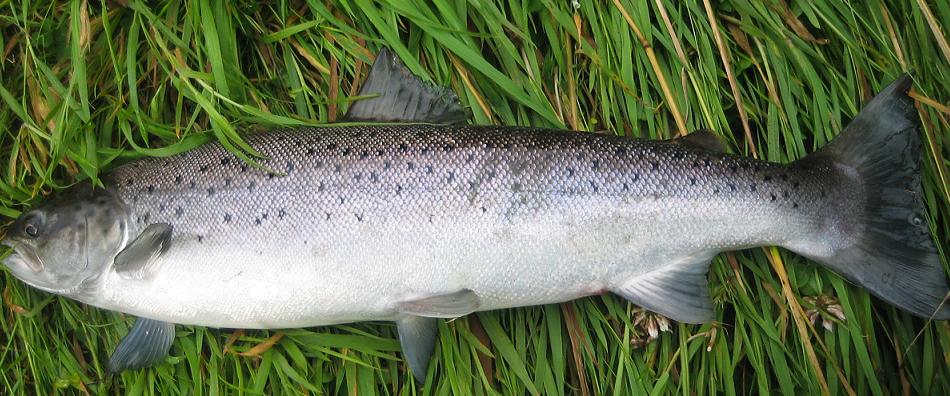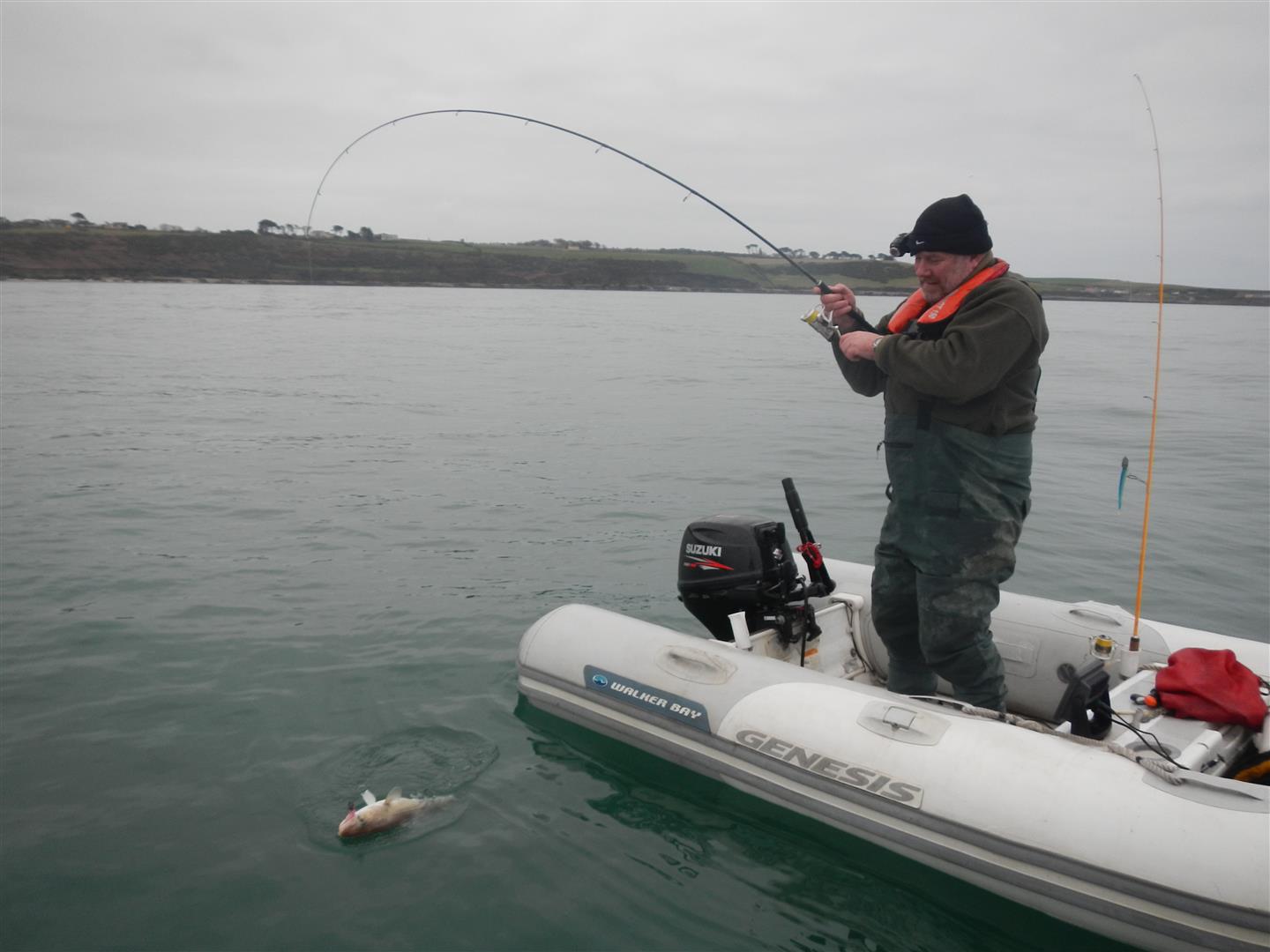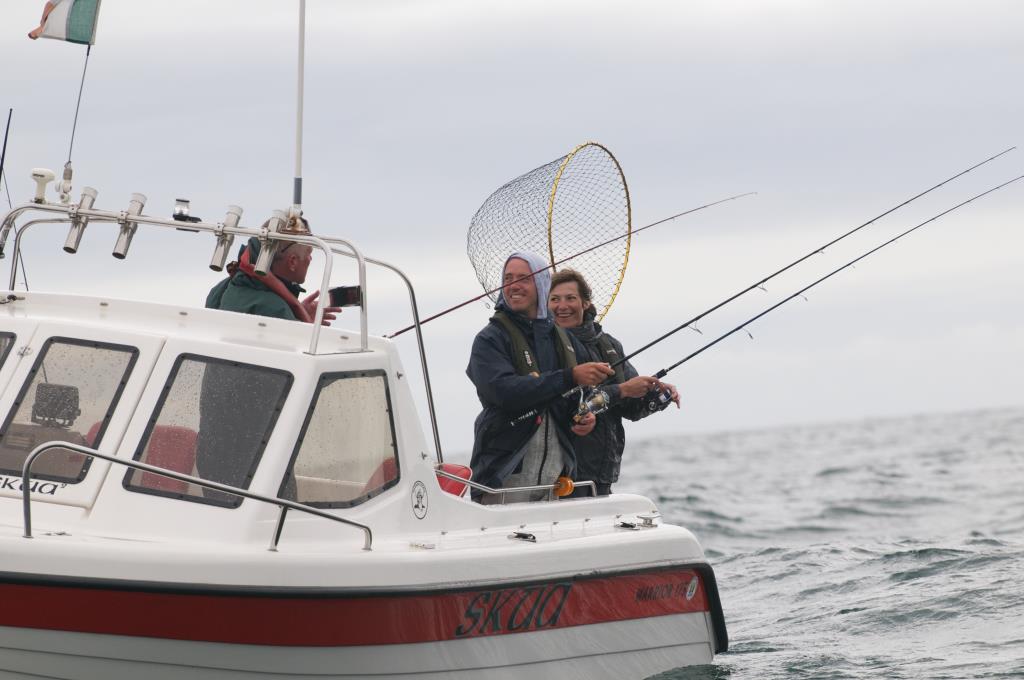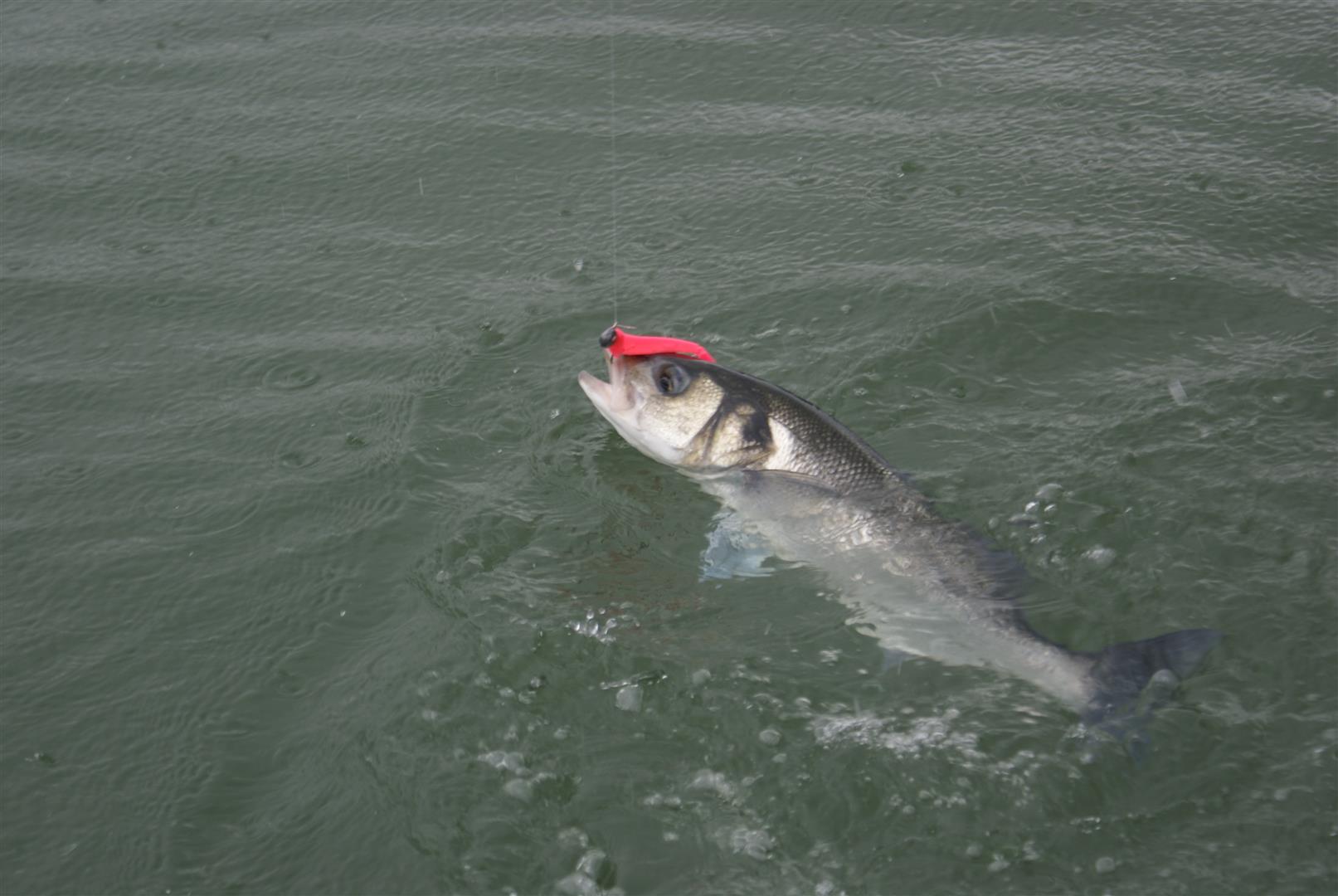* Streamer – Seatrout – Daytime!
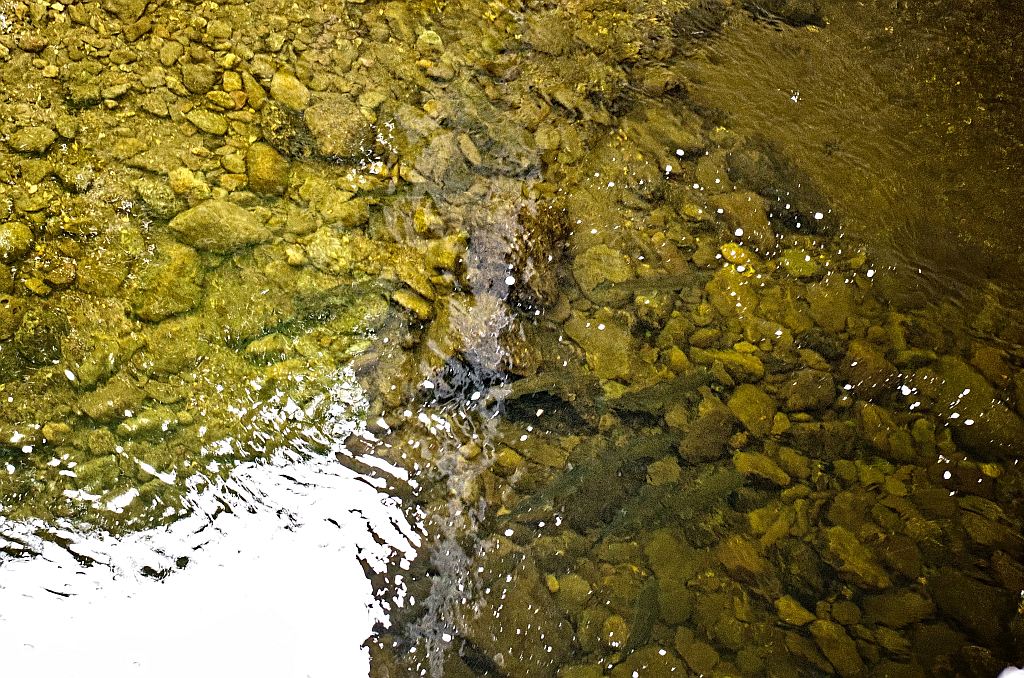
Daytime River Fly Fishing for Sea Trout
Every time I look at this photo taken by my good friend Kuba I get the itch to go sea trout fishing. It gets worse at this time of year as the first good runs can be expected around the end of April. There is no exact science as to when these early fish will arrive. Often it is the second or third spate before they seem willing to travel, and they run hard, travelling well upriver. It is a case of trying each spate, until you hit the run, so don’t give up if things are quiet after the first flood or two.
I grew up fishing for sea trout (known locally as white trout) on small rivers since I was a boy. Here in Ireland when you talk about sea trout fishing with fly the conversation always turns to night fishing. But fly fishing for sea trout on our small rivers during the day can be very productive, with the correct tactics in the right conditions. It has become even more productive in recent years with many rivers becoming single barbless, catch and release. This hasn’t suited many of the lure anglers but one man’s loss can be another man’s gain! The options for daytime fly fishing for sea trout in rivers are dry fly, dapping, nymphs, wet fly and streamers.
Dry fly fishing for sea trout has never yielded great results for me. It can be OK when there is a good hatch of natural fly but this isn’t very consistent on spate rivers. Dapping is not really fly fishing and is more suited to loughs, but it can be quite effective for sea trout. Nymphing can produce some nice sea trout from fast water but on small spate rivers in gin clear water it tends to spook too many fish and traditionalists certainly don’t want to see you wading around the pools they are hoping to fish at night! Wet fly fishing can work well for sea trout on small rivers during the day, with light leaders and small flies (size 14 to 18) such as the Kill Devil Spider, and Black & Peacock Spider. With small flies and light tippet fish landed tend to be relatively small in size. Overcast days with a nice breeze disturbing the surface of the water tend to be good days to try the wet fly.
Streamer fishing is my No.1 choice for fly fishing for sea trout during the day. The best streamer fishing takes place when the river is falling and clearing after a flood. A dark beer colour to the water is ideal!! This is a key factor and you will learn to gauge when the water is just right with experience. The other key factor of course is the presence of fish in the river. Get these two in combination and you are in business. The prime taking time can be short though on bright days when the water clears out quickly. This makes sense of course as a fish is likely to get very nervous in those conditions. Ideally you are hoping for an overcast or rainy day with the water clearing slowly.
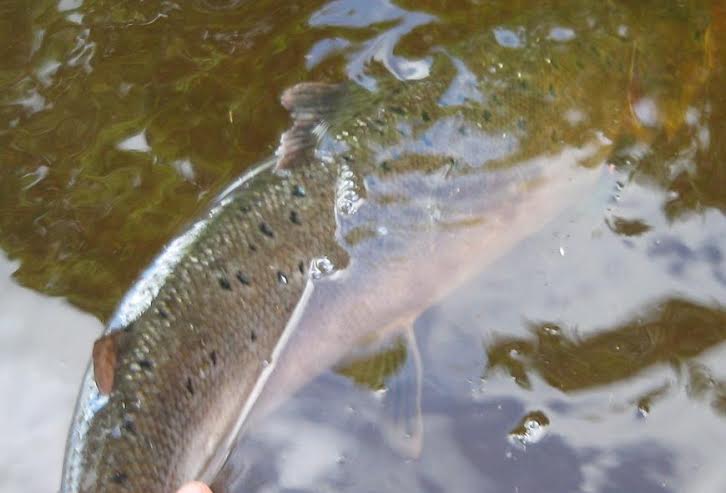
Tackle Choices
Tackle choice would be a 9ft 7wt rod, a specialist streamer line and strong tippet I would recommend a short length (6ft) 10lbs Rio Flourofex Plus. It is very strong and fluorocarbon sinks. Alternatively a 9ft tapered leader to 10lbs is an option. Tapered leaders are great for turning over big flies. Fresh sea trout can have soft mouths and jump a lot so an out and out casting weapon may not be the first choice. Yet, the rod needs to have a fairly fast action for casting large heavy flies. I currently use Sage One rods which came highly recommended by Pat at Premier Angling Supplies but if these are outside your budget a Greys GR50 would be a good option.
The correct fly line is really critical and streamer lines tend to have a very fast sink rate and a taper akin to that of an integrated shooting head. Most are not full sinking lines but are sink tip lines. The floating back section aids with mending if you need to get your your fly deeper in a fast current. Teeny T-Series lines are my preference but the Orvis Hydros Streamer Stripper or Rio Streamer Tip would be another good option. The latter is designed for fishing from a boat but in really small rivers a streamer line that loads the rod easily at short distance can be a definite advantage.
On the business end there is a choice of flies available but don’t go without a Black Conehead Wooly Bugger in size 4 or 6 long shank. My favourite streamer fly for sea trout is the Snake Zonker. These are really mobile in the water with their rabbit strip back. My own ones are tied with UV bodies or flashy beads to stand out in the coloured water. I cut off the front hook at the bend to avoid the fly hanging up on itself. I tie mine with size 6 blob hooks because of their extra wide gape. These are great hookers and also have a straight eye which I prefer. Don’t forget to debarb the hook! Other useful flies would be large tube flies, intruders, and tandems. As a general rule the higher and darker the water the bigger and heavier (in your face) the fly needs to be. Try black and dark brown streamers in dirty water and orange, white and blue & silver in a lighter stain.
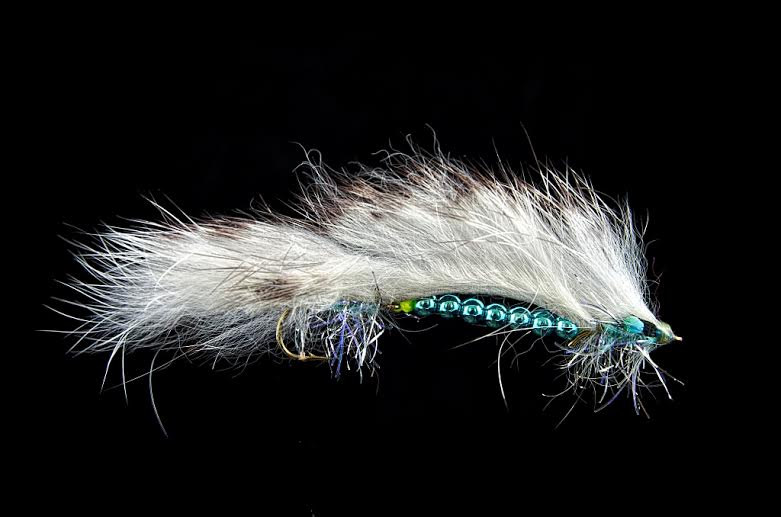
Techniques and Tactics
The technique is to cast across or across and down. Let the fly sink a bit and then strip, strip, strip right the way in. If the current is fast you can mend the line to get the fly deeper. The streamer line will keep the fly deep right the way across the pool. Be very careful at the end of the retrieve not to just recast. There may be fish following so lift with care and pause before recasting. It be very frustrating, watching a good fish boil and swirl just where you fly was as you pulled it away from him. It could have been your one good opportunity! Also with this technique it pays ‘not to strike’. Keep retrieving if you feel knocks or pulls, don’t lift until you feel the weight of the fish. If a fish is following and nipping at the fly you don’t want to move the fly to a different water column as the fish might lose sight of it in the coloured water and possibly give up the chase. If the fish hits hard you are likely to hook it on the “strip-strike” anyway. And remember, sea trout are precious these days so practice as much CPR (catch-photo-release) as you can.
Target the tails of pools when the water is very high and dirty as this is where the flow is slacker (for a resting fish) and the visibility is best. As the water drops and clears move on to fish the middle of pools and eventually the runs too. Keep on the move fishing the big slow pools first and then any likely looking spots as the water clears. Remember that fish can feel more secure in the runs and in shadowy areas when the water clears out quickly. Carry only what you need with you as a lot of walking is involved in this type of fishing. Spare leaders, tippet, and streamers should fit in your jacket or vest pocket. A landing net is a good idea for high banks. I use ones with rubber mesh as it seems more fish friendly for catch and release. Make sure to wear your glasses and hat to protect your eyes from those large heavy flies which are not the easiest to cast. The ability to haul or double haul is a definite advantage.
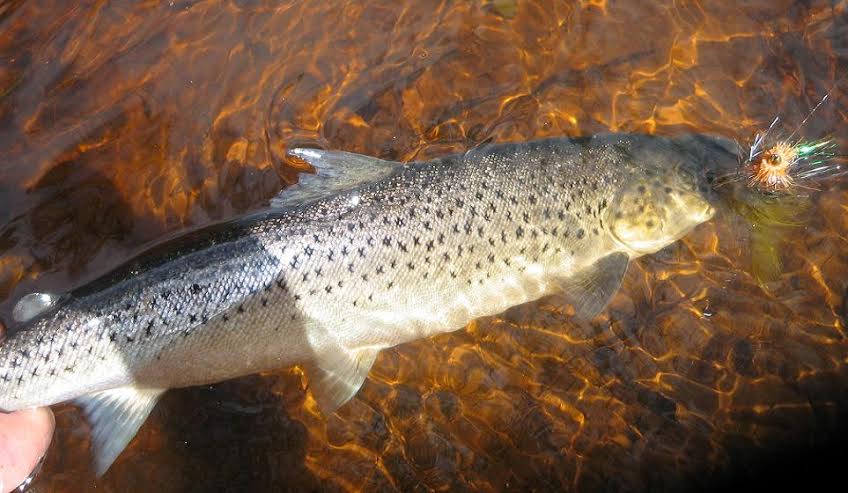
[box type=”info”]Jason O’Riordan is a Fishing Guide in South East Ireland. He is a highly knowledgeable and well respected guide. Jason covers both fresh and salt water and especially fly. Casting Tuition is a speciality. His webpage is: www.gamefishingireland.ie. He can also be found on Facebook – South East Game Angling.[/box]
www.gamefishingireland.ie





